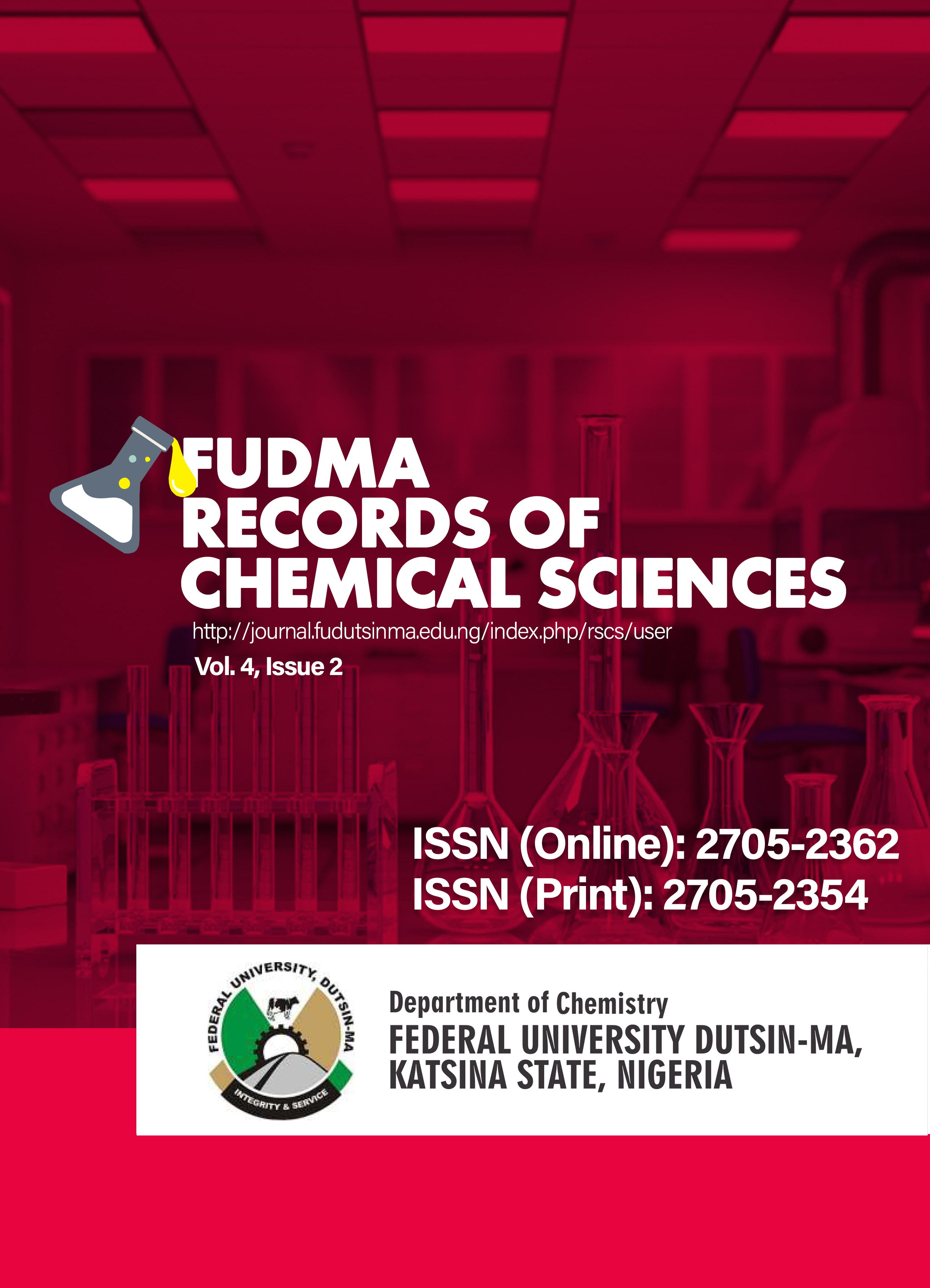Green Synthesis of Silver Nanoparticles Using Chromobacterium violaceum: Characterization and Enhanced Antimicrobial Activity against Foodborne Pathogens.
DOI:
https://doi.org/10.33003/frscs-2025-0402/04Keywords:
Biosynthesis , Nanoparticles , C. violaceum , Antimicrobial activity , Green synthesisAbstract
This study presents the biosynthesis and characterization of nanoparticles assisted
by Chromobacterium violaceum, and focuses on their role in antimicrobial activities. The
isolation and identification of the organism were conducted using standard biochemical
assays, while the characterization of the synthesized nanoparticles was performed using
Brunauer–Emmett–Teller (BET) analysis, Fourier Transform Infrared (FTIR) analysis, and X
ray diffraction (XRD). Production of AgNP was confirmed by surface plasmon resonance at
420 nm, peaking on day 4, and was optimal at pH 7. The biochemical assays revealed that the
isolated organism is oxidase- and catalase-positive, but unable to ferment lactose or sucrose.
BET analysis showed a high specific surface area (222.834 m²/g) and mesoporosity. FTIR
spectra identified various functional groups such as hydroxyls, amides, and aromatics. XRD
analysis revealed the crystalline face-centered cubic (FCC) structure of pure AgNPs, with
characteristic peaks corresponding to (111), (200), (220), and (311) planes. The antimicrobial
analysis demonstrated dose-dependent inhibition of Bacillus cereus and Aspergillus flavus,
with variation in susceptibility among other isolates. The irregular responses of
Staphylococcus aureus and Aspergillus niger at higher doses suggest complex interactions due
to aggregation or microbial resistance mechanisms. Conclusively, C. violaceum-synthesized
AgNPs exhibit promising bioactivity, structural integrity, and surface characteristics for future
applications.






